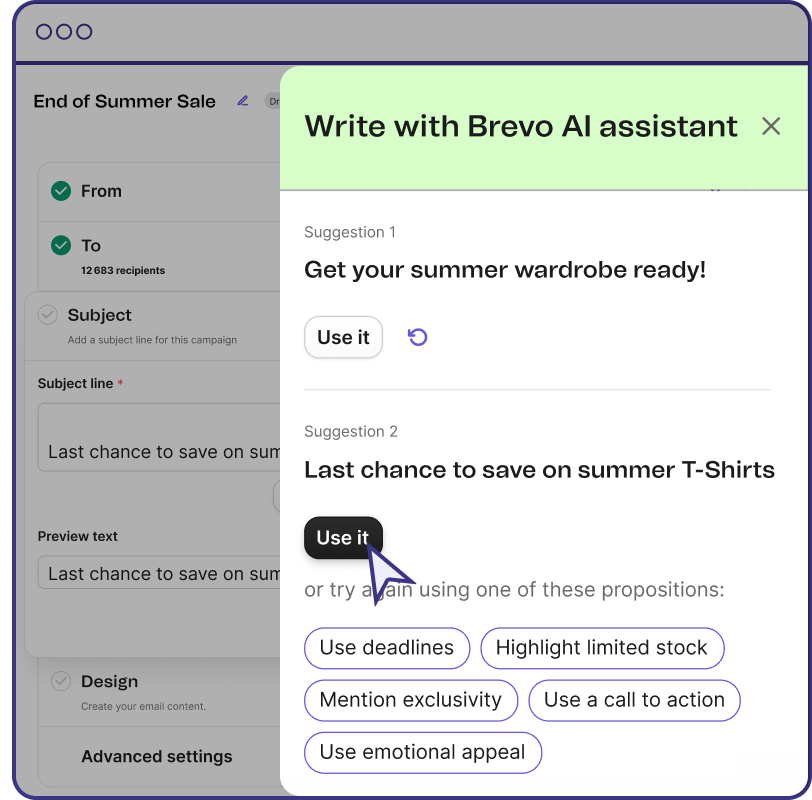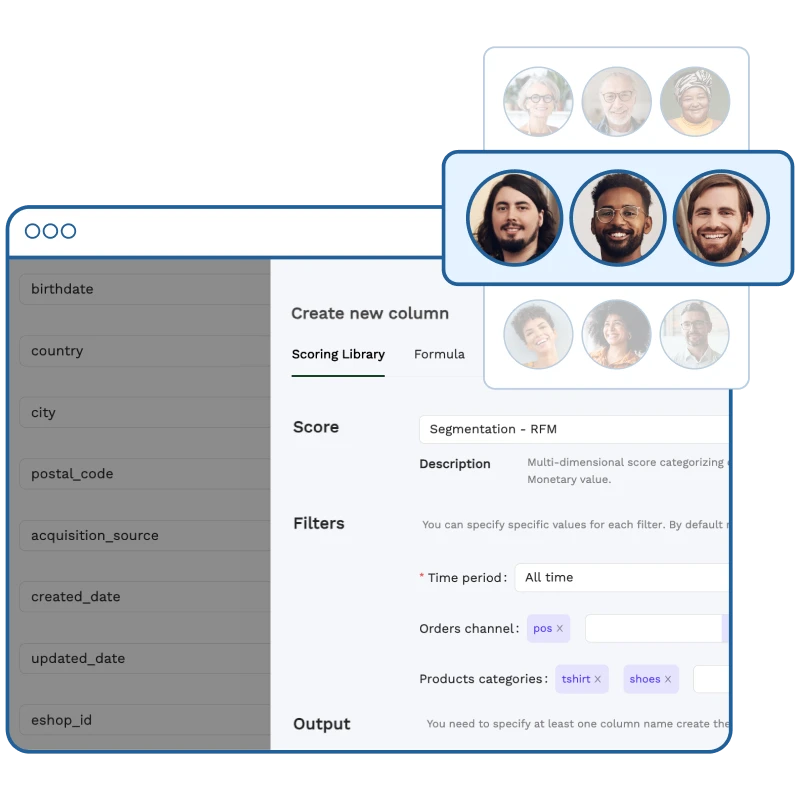2025 is shaping up to be one of the most pivotal years in email marketing in recent memory. Driven by rapid advancements in artificial intelligence (AI), it’s clear that now is not the time to be left behind.
But it’s not just AI transforming the email marketing landscape, either. Savvy marketers also need to stay ahead of emerging trends and priorities, including data privacy, security, and sustainability.
Email marketing remains a powerful tool for businesses, but anyone expecting to send a half-hearted email blast and watch the profits roll in needs a reality check. Brands must work harder and smarter than ever to stand out. Old techniques are saturated, and staying ahead of the curve is crucial to achieving real results.
In this article, we’ll explore seven of the latest email marketing trends set to define 2025. Remember: embracing change isn't just about keeping up — it’s an opportunity to outpace your competition and build deeper, more meaningful relationships with your email list.
Table of contents
- 1. AI copywriting: Transforming email content creation
- 2. Building trust through AI transparency
- 3. Embracing zero-party and first-party data strategies
- 4. Mastering targeting, timing, and personalization with AI
- 5. Sustainability in email marketing: Less can be more
- 6. Interactive emails and gamification: Boosting engagement
- 7. Email security in 2025: BIMI and authentication best practices
- Looking to the future
1. AI copywriting: Transforming email content creation
Using AI to generate copy is nothing new — marketers have been doing it for years.
But for those who have yet to embrace the AI juggernaut, the shift is inevitable. The trajectory of AI adoption in marketing is only moving forward. In fact, most of today’s email marketing trends are driven by AI in some way.
Tools like ChatGPT, Claude, and Jasper are advancing rapidly, and savvy marketers are utilizing them to enhance their creative chops, optimize messaging, and boost productivity. These tools are no longer just helpful — they’re becoming essential components of a modern marketer’s arsenal.
In 2025, generative AI can already fully automate the email-writing process — from crafting email subject lines and engaging body text to generating CTAs that resonate with diverse audiences.

Generating email subject lines with Brevo's built-in AI assistant
And it’s still early days. Companies like OpenAI and Anthropic are investing billions into advancing the large language models (LLM) that make AI writing more sophisticated—and more human-sounding — with each update.
In other words, AI writing is only going to get better — fast. Generating high-quality emails is now as simple as providing clear prompts and letting AI do the heavy lifting. And while mastering prompts does come with a learning curve, it’s well worth experimenting with and persevering — the results are worth it.
Looking ahead, expect to see marketers lean more heavily on AI than ever before, as we see game-changing AI developments this year.
Related: Read more about AI in digital marketing
2. Building trust through AI transparency
But how will people react to the increased use of AI?
One of the key pushbacks expected in 2025 is that consumers want to know they are reading human-made content rather than something created by a machine.
As AI adoption grows, expect to see a shift towards AI transparency. Companies will increasingly disclose how they use AI, not just as a legal compliance measure (which may become necessary in the future) but as a way to present themselves as open, trustworthy, and authentic.
What might this look like in practice? It could be as simple as including a disclaimer, like “This email was AI-assisted.” Meanwhile, brands that use human writers exclusively may jump on the opportunity to emphasize this — “We only ever send human-written content.”
We’ve already seen signs of this trend. Amazon, for example, already requires self-publishing authors to disclose whether a book is AI-written or AI-assisted, signaling a potential industry-wide shift.
As regulations evolve and consumers become more savvy, being upfront about AI usage will likely become standard practice. Navigate this transition well and you turn a potentially tricky topic into something you can leverage.
Related: Discover the best ChatGPT prompts for marketing
3. Embracing zero-party and first-party data strategies
As data privacy regulations tighten in 2025, marketers are shifting towards zero-party and first-party data strategies to respect customer privacy. It’s a bigger email marketing trend than ever.
With third-party cookies declining over the past few years, brands have been scrambling to find ethical ways to build direct relationships with their audiences and collect valuable data.
Zero-party data is information consumers willingly share, such as preferences and interests — via survey and quizzes — as well as purchase intentions.
On the other hand, first-party data is collected directly from a business’s owned channels, including websites, apps, and emails. Every interaction — from clicks and purchases to browsing behavior — generates behavioral data, purchase history, and website analytics. This data can be used to enhance email segmentation and personalization — or, as we’ve seen above, give AI more data to work with.
In 2025, expect to see more brands investing in creative strategies to encourage data sharing. Sure, convincing customers to share information isn’t exactly easy. But offering a strong incentive to provide clear value in exchange for the data will persuade some people. This ensures your marketing stays both effective and ethical.
4. Mastering targeting, timing, and personalization with AI
In 2025, AI's role in email marketing will extend far beyond automated copywriting.
Recent advances in machine learning have transformed AI into a powerful predictive analytics tool, turning raw customer data into actionable insights. This includes precise targeting, highly personalized messaging, and perfectly timed sends — all of which can revolutionize your marketing approach by optimizing and automating every step of the process.
The process starts with AI-driven audience segmentation, where advanced algorithms analyze behavioral patterns and demographics in real-time to create laser-focused micro-segments. This ensures recipients receive only the most relevant content, keeping unsubscribes to a minimum.
Next is hyper-personalization. AI generates tailored email content that speaks directly to the specific needs of each recipient. This includes personalized subject lines, dynamic product recommendations, and customized offers and discounts, making emails feel bespoke and valuable.

With your campaign ready, the final step is send-time optimization. Platforms like Brevo use AI algorithms to predict the ideal time to send emails to each individual contact. These predictions are based on time zones, previous open times, and other behavioral patterns. With every email marketing campaign sent, AI has more data to lean on, improving precision and maximizing engagement.
In other words, AI’s predictive analytics can boost open-rates, click-through rates, and, ultimately, conversion rates — all the important metrics. These AI tools will only become more powerful — and therefore, more essential — in 2025.
5. Sustainability in email marketing: Less can be more
As environmental awareness reaches an all-time high, brands are finding innovative ways to reduce their carbon footprint and reach eco-conscious consumers.
This includes email marketing.
Many don’t realize that email marketing has an environmental impact. After all, digital marketing is vastly more eco-friendly than print. But every email consumes energy, from data storage and processing to the electricity needed to send and open messages. It’s a relatively small footprint, but as businesses scale, it adds up.
In 2025, eco-conscious brands are rethinking email strategies to align with modern consumer’s sustainability expectations. In other words, stripping back unnecessary email volume, optimizing file sizes and email design, and highlighting their sustainability message within email campaigns.
The result? Leaner emails, compressed images, and even the return to plain-text formats. Clean, simple, and efficient — proving that less can be more. Expect this to be a big email marketing trend in 2025.
6. Interactive emails and gamification: Boosting engagement
While simplifying emails for sustainability is a growing email marketing trend, many brands will take the opposite approach in 2025: going all-in on creating dynamic and interactive email experiences.
Expect to see videos, animated graphics like countdown timers, gifs, product carousels, and click-to-reveal content that transform emails into engaging mini-websites.
Gamification is also set to take significant strides forward. Think spin-the-wheel promotions, scratchcards, and even fully-fledged mini-games, made possible through technologies like AMP for Email.
These interactive elements entice users to click, even if they aren’t initially convinced about making a purchase. Curiosity drives clicks, and a strong reward—like discounts—can convert casual engagement into sales.
Fun, immersive email experiences make every message memorable. Consumers crave entertainment and want to feel excited about engaging with brands—interactive content is one of the best ways to achieve this.
And if you’re concerned about compatibility issues with mobile devices or dynamic content being blocked by some email clients, a simple workaround is to use static images with a clear call-to-action. This lets you direct recipients to your website, ensuring everyone enjoys the full user experience.
7. Email security in 2025: BIMI and authentication best practices
In 2025, email security and authentication will become increasingly important for marketers.
With major email clients like Gmail and Outlook prioritizing authenticated emails, stronger security measures will ensure your messages land in inboxes—not spam folders.
As phishing attempts become more sophisticated, consumers are increasingly cautious about clicking email links. To combat this and rebuild trust, brands are turning to Brand Indicators for Message Identification (BIMI) and advanced email authentication protocols.
BIMI allows brands to display their logo next to the sender name, but only after authenticating their security measures and getting verified by a third party.
This is a win-win for everyone involved. Security-conscious consumers feel safer when they see a familiar logo, gaining added confidence that the email is legitimate. Meanwhile, the logo helps your brand stand out in crowded inboxes, boosting open rates and engagement. Everyone wins.
Beyond BIMI, marketers are adopting stricter email authentication measures like DMARC (Domain-based Message Authentication, Reporting, and Conformance) and SPF (Sender Policy Framework). These protocols ensure only verified senders can reach subscribers' inboxes, effectively preventing spoofing and phishing attacks.
In 2025, expect more brands to invest in email authentication technologies. As security expectations rise, businesses will strengthen security to build trust.
Related: Understanding SPF, DKIM, and DMARC
Looking to the future
As we move into 2025, email marketing is evolving rapidly, blending cutting-edge technology with shifting consumer expectations. The email marketing trends shaping this year present valuable opportunities for marketers who adapt quickly.
By staying ahead of these emerging email marketing trends, brands can strengthen their connection with audiences, boost engagement, and drive better results. Ultimately, embracing new ideas and adapting to change will future-proof your email marketing strategy and keep it effective for years to come.







